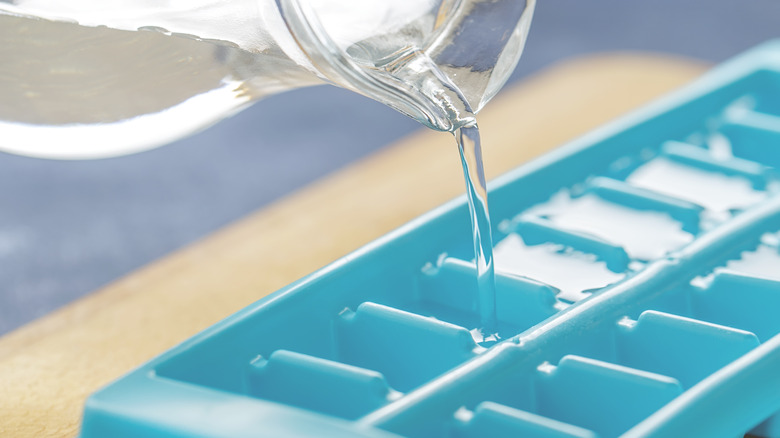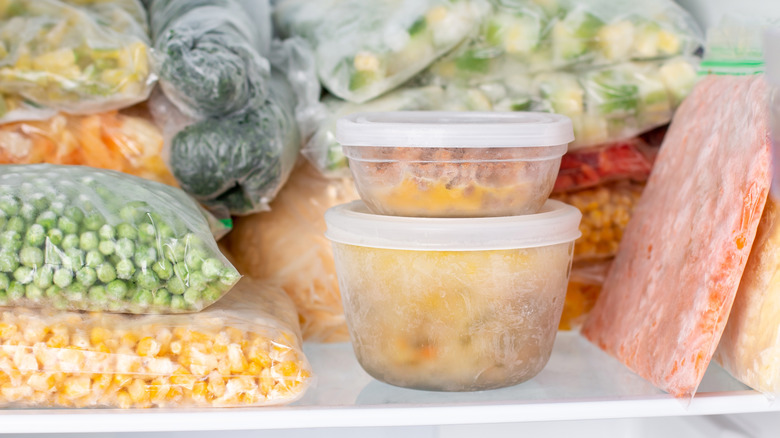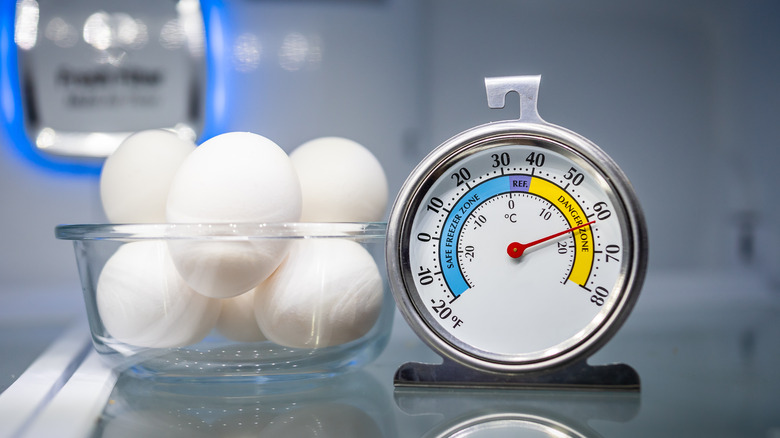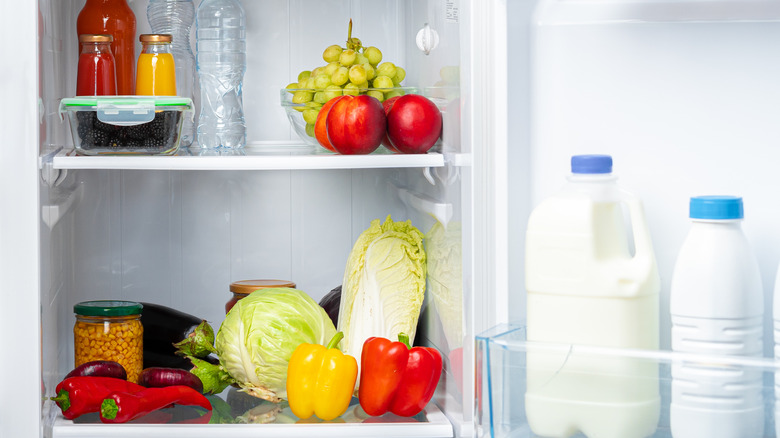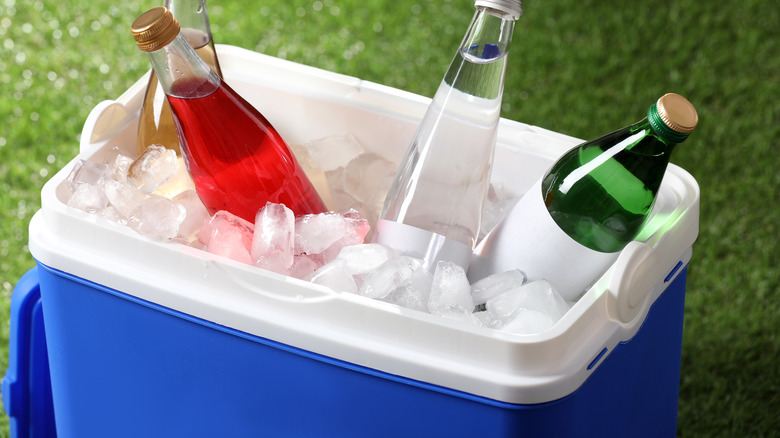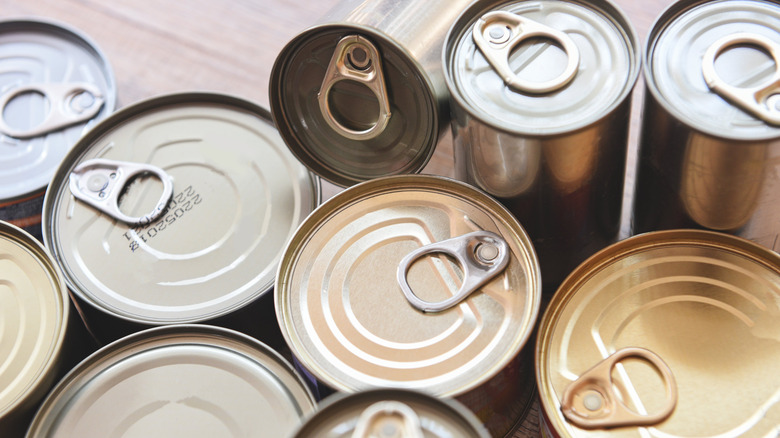Tips For Saving Your Food During A Power Outage
In life, we all face an endless amount of circumstances, both good and bad. Unfortunately, a bad and inconvenient situation we will all have to deal with several times in our lives is a power outage. These are usually unpredictable and can last for an unknown amount of time.
Additionally, power outages can affect more than just the power. Depending on other conditions, some can lose access to water, lack heating and air, and, in some cases, even lose the food in their refrigerator. As unfortunate as this sounds, this actually does happen. However, this doesn't always have to be the case.
According to the US Food and Drug Administration, your food can remain safe in your refrigerator for up to four hours after the loss of power with a full freezer being safe for 48 hours. Yet, it's extremely important to keep both doors closed as much as possible so all of the cold air stays within the refrigerator and freezer. Unfortunately, after the hours are up, perishable foods such as eggs, meat, and poultry should be thrown away. However, there are a few other things you can do to help your food last longer. Here are seven tips for saving your food during a power outage.
1. Always have ice
Of course, having water on hand at all times is a great idea. However, in case of a power outage, or other kinds of emergencies, it's important to have ice nearby as well. Per Family Handyman, keeping ice on hand is an essential part of saving food when you lose power for a lengthy amount of time. Bags or containers of ice will help keep the food cold for a longer amount of time.
Additionally, frozen water bottles are great to have as well. When the ice in the bottle melts, you now have water to drink. Of course, this is for extreme circumstances. Remember, when water is frozen into ice, the container in which it resides can expand. This is important to take into consideration when storing in a freezer to make sure there is enough room. If there isn't enough room in your current freezer, a separate chest freezer is recommended.
2. Transfer foods from fridge to freezer
In life, there's always more than one way to do things. This is true when it comes to food storage as well. As per Insider, if the power is out for a long period of time, you can transfer some items from the refrigerator into the freezer. This will allow them to stay cold for a longer amount of time to help them last longer and prevent any unwanted waste.
Items such as meats, milk, and any prior leftovers can easily be transferred from one place to the other. These are items that you, of course, still want but may not need immediately. However, of course, depending on the temperature, there may be certain items, such as eggs, that should not be placed in the freezer. It's important to check ahead of time to ensure the items in your refrigerator can safely spend time in the freezer.
3. Thermometers save food and lives
Having a thermometer on hand is the best and most efficient way to check your refrigerator's temperature. According to Backdoor Survival, both refrigerators and freezers must be kept above a certain temperature to be deemed safe. For refrigerators, 40 degrees Fahrenheit or lower is the perfect temperature. Freezers, on the other hand, should be set a lot lower at zero degrees Fahrenheit at the minimum.
Any food items within a fridge or freezer above these temperatures should not be consumed. In doing so, you could end up sick and potentially face life-threatening issues. Remember: when in doubt, throw it out. You can also check the temperature of the food itself with a thermometer. They come in a variety of options and can be found fairly cheap on Amazon or at any other online or in-store retailer. Keep in mind that while it may be tempting to obsessively check the temperature as the power outage goes on, you should try to avoid opening your fridge and freezer too often to prevent unnecessary cold air leakage.
4. Group foods together
While this tip is fairly simple, it may be one that many don't think about. The US Food and Drug Administration suggests grouping your foods closely together. This keeps them colder and acts similar to the way that ice does. Place the food as close to each other as you possibly can. Stacking food items on top of one another works too depending on the type of food. Nonetheless, grouping foods together can make them last just a bit longer.
Since heat rises, it can be beneficial to group the food items together on the lowest level possible as well. This could be in both the refrigerator and the freezer. Additionally, grouping them in the corner of the lowest level would be the best location. Having cold walls on adjacent sides surrounding the foods will further help keep the items colder and for a longer period of time.
5. Invest in a cooler
Of course, you can always invest in and use a cooler, as the American Red Cross recommends. This is one of the best and most efficient ways to help preserve your food, especially if the power will continue to be out for a long period of time. It's important to remember that just like the refrigerator, the cooler should remain at 40 degrees Fahrenheit or lower at all times to prevent the food from going to waste. Anything above that should be thrown out.
Additionally, aside from the food, the remaining part of the cooler should be filled with as much ice as possible. Ice packs are also super helpful if ice is not available or in short supply. If one cooler is not enough, then use two if possible. Using two is also helpful if you desire to have one for refrigerator items and one for freezer items.
6. Don't store food outdoors
While this may be tempting in the snowy winter months, FoodSafety.gov warns not to store food outdoors under any circumstances. Just because there is snow and even ice on the ground, that doesn't mean that it's cold enough to store food. Outside temperatures can vary depending on location and conditions. Even the snow may not be cold enough to keep your perishable items at a safe temperature.
In addition to the temperature, the outdoors is a very unclean place to be. This is true even more so when it comes to food items. Many germs and other viruses live outdoors and your food can act as a magnet to bacteria and can contaminate your food. Likewise, storing food outdoors can also attract unwanted insects and animals. Overall, it's best to just keep your food indoors and in an airtight container or in the refrigerator and freezer.
7. Room temperature and non-perishable items
Even though some items should remain in the refrigerator, some can still last outside for a short amount of time, per Backdoor Survival. Foods such as butter, fresh fruits, block cheeses, and opened jars of condiments can last for up to a day or two unrefrigerated. However, it's always best to check these items before consuming them. Always smell and examine each item, but never taste food to determine whether it's safe to consume.
Of course, there are plenty of non-perishable items you can buy and keep in stock as well. As per the US Department of Agriculture, canned items such as tomatoes and other fruits can last for 18 months as they are high in acid. However, low acid canned foods such as vegetables and meats can last anywhere from two to five years. Cans that don't have any swelling, dents, or rust are safe to consume indefinitely.

